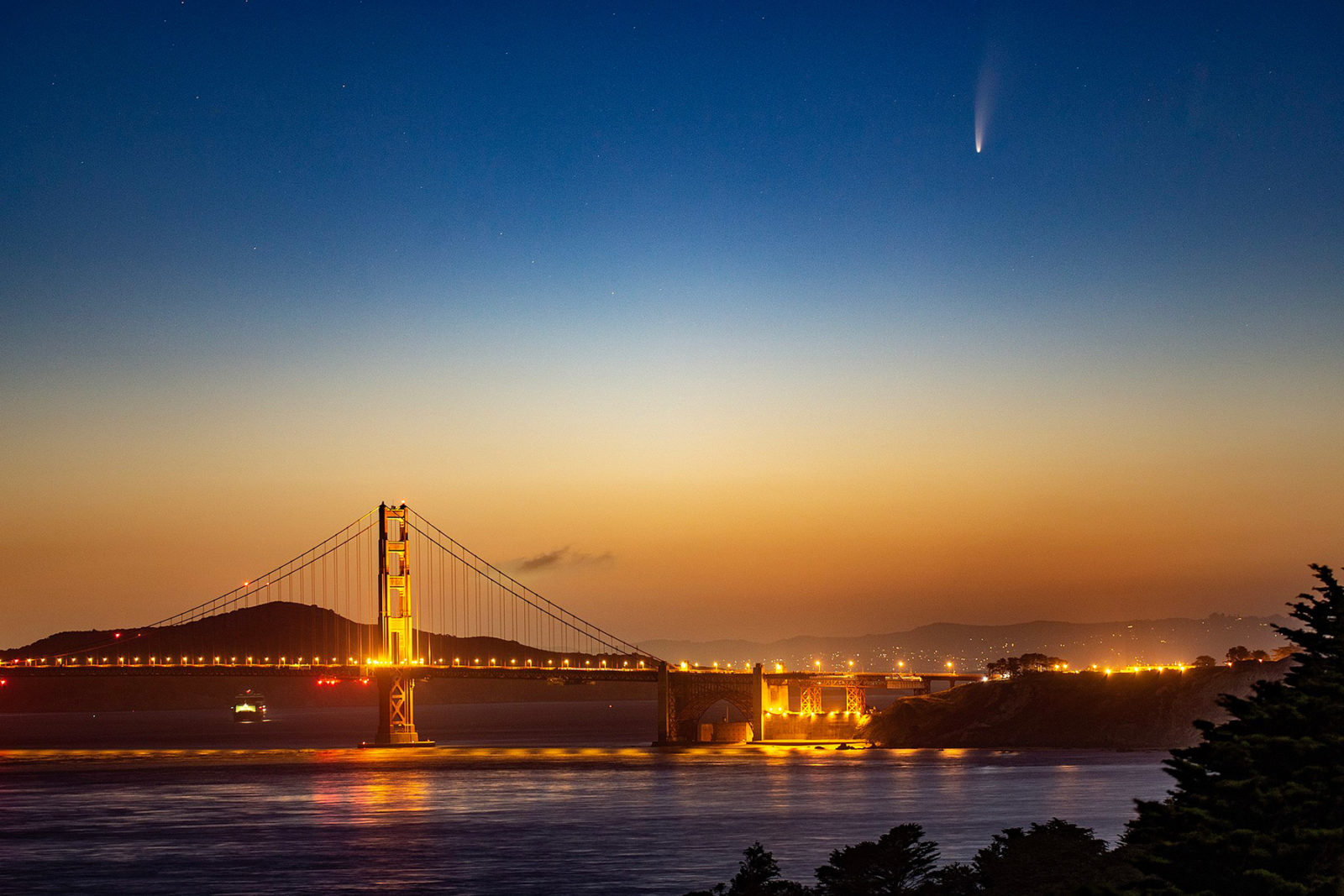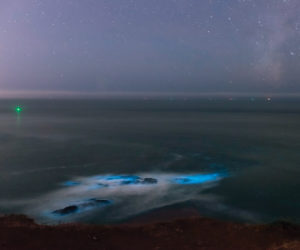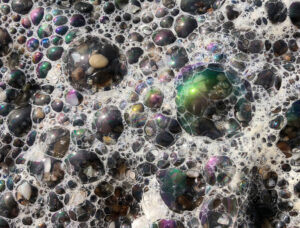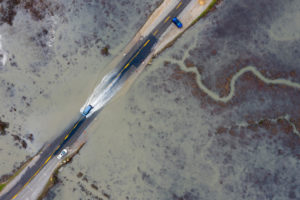
Bay Area residents have been enjoying a rare celestial treat this month. A recently discovered comet, officially dubbed C/2020 F3 and nicknamed “NEOWISE,” is putting on quite a show as one of the brightest comets to be seen since the 1990s. Until a few days ago, NEOWISE could be seen only in the early morning hours. But in the coming days, it will be visible higher and higher in the evening twilight.
Comets are fairly common. On any given night, astronomers can spot a half-dozen or more comets in the night sky. The problem is, most comets are so faint and far away that only astronomers using telescopes get to see them. But NEOWISE is bigger and closer to Earth than most comets, so it is bright enough for us to see faintly with the unaided eye, and easily with a simple pair of binoculars.
Remember, they are an exotic species in the Western United States, and are rapidly increasing their geographic range and range of habitats. Are they outcompeting or excluding native species in the process? How would we know? We have done almost nothing to monitor changes in the assemblage of mushroom species in areas before and and after the incursion of death caps.
Further Reading
Pringle et al, “The ectomycorrhizal fungus Amanita phalloides was introduced and is expanding its range on the west coast of North America,” Molecular Biology 2009
Lockhart et al, “Simultaneous emergence of multidrug-resistant Candida auris on 3 continents confirmed by whole-genome sequencing and epidemiological analyses,” Clinical Infectious Diseases 2017
Battalani et al, “Aflatoxin B1 contamination in maize in Europe increases due to climate change,” Scientific Reports 2016
Chabot Space & Science Center will hold a virtual presentation and Q&A featuring NEOWISE at 8 p.m. on Friday, July 17 as part of a series called The Sky This Month.
Weather permitting, Chabot’s Virtual Telescope Viewing hopes to catch a live view of the comet NEOWISE on Saturday, July 25. Every Saturday night at 9:30 p.m., Chabot astronomers answer questions and look through Nellie, Chabot’s most powerful telescope.
Like most comets, NEOWISE originated in the Oort Cloud, a spherical swarm of icy bodies orbiting more than a thousand times farther from the Sun than the Earth. Most Oort Cloud objects remain peacefully in their distant orbits, but occasionally one is knocked out of the Cloud — perhaps due to a collision with another Oort Cloud body, or because its orbit is perturbed by a nearby star. The dislodged icy body can then drop into a highly elongated elliptical orbit that takes it into the inner solar system, around the Sun, and then back out. In such an elongated orbit, originating from so far away, it takes NEOWISE nearly 7,000 years to make one orbit around the Sun.
Comets are often referred to as “dirty snowballs.” They are composed of ices that froze in the outer reaches of the solar system. Because it is so cold in deep space, chemical compounds that we normally think of as gases, such as carbon dioxide, cyanogen, ammonia and methane, freeze into solid ice, along with ordinary water ice. Embedded in the ice are rocky particles, including sand, pebbles and a few stones. As the comet’s orbit brings it closer to the Sun, the ice warms. In the vacuum of space, the ice reverts directly to its gaseous state in a process called sublimation. As the ice sublimates, it releases those embedded rocky particles. The stream of released gas and particles form what we see as the comet’s tail.
NEOWISE is named after the NEOWISE spacecraft, which is a science satellite that orbits the Earth in a special type of orbit called a “sun synchronous” orbit. The satellite orbits over the poles in such a way that it is always in sunlight, maximizing the electric power from its solar panels. NEOWISE is equipped with a very sensitive infrared camera that was originally used to scan the sky to analyze the infrared signatures of distant stars and interstellar gas clouds. In 2011, the spacecraft was repurposed to search for near-Earth objects (NEO) – asteroids or comets that come close to or cross the Earth’s orbit.

To find comet NEOWISE in the Bay Area, wait until shortly after 9:30 p.m., then go outside and look low in the northwestern sky. The comet will be about 20 degrees above the horizon, in the lower part of the constellation Ursa Major, the Big Bear. The most distinguishing feature of Ursa Major is the Big Dipper, which most people recognize. The comet will be below and slightly to the left of the Big Dipper, about halfway between the Dipper and the horizon.
The comet is slowly moving in its orbit, so each night NEOWISE will appear slightly higher and a bit more to the west. Although it is now moving away from the Sun, it is getting closer to the Earth, and will be closest the night of July 22. For the next couple weeks, you may be able to see it as a faint smudge without using binoculars, but once it moves away from Earth you will definitely need binoculars.
For some extra fun, you might try photographing the comet. You’ll need a camera that can be set to photograph in very faint light, especially if it can be set to take long exposures of 5 or 10 seconds. You’ll also need a telephoto lens. Be sure to frame the view so that a few ground objects, such as a tree or the top of a building, are included in the photo. This gives a better perspective of the size and orientation of the comet, and adds drama to your photo.
Whether you decide to photograph comet NEOWISE, or just sit out under the stars and watch it with binoculars, you don’t want to miss this opportunity to enjoy a rare celestial spectacle.




